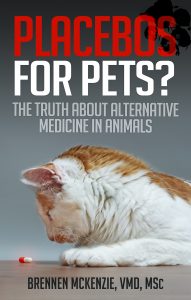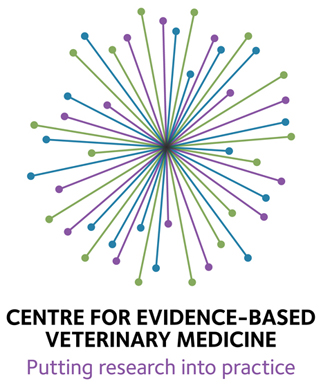One of the most attractive features of alternative therapies is that they offer hope. CAM treatments, by definition, are almost never validated by the usual scientific research evidence used to test mainstream medical therapies. If they were, they would no longer be alternative. And while there is sometimes in vitro or pre-clinical research to support particular CAM treatments, and always mountains of positive anecdote and individual belief, a distinguishing feature of alternative medicine is that practitioners don’t feel controlled, high-level, high-quality clinical research is necessary to claim therapy is successful. Personal experience and faith count for much more, and CAM practitioners frequently see it as inappropriate to ask for better evidence because this might discourage the use of therapies they believe in.
Conventional medicine, more closely tied to science and mindful of the unreliability of anecdotes and trial-and-error in medicine, is more often reluctant to make strong claims for untested treatments or encourage optimism where there is only hope and desire, but little evidence, to suggest it is warranted. This is a less effective marketing position, but it is arguably more honest and less likely to encourage the use of ineffective or harmful treatments.
There is always, of course, a balance to be struck between the urgency of intervening in a health problem and the uncertainty about the effects of one’s intervention. Doing nothing may work a surprising percent of the time, giving the robust innate healing abilities of living beings, but there are times when choosing not to intervene undoubtedly leads to greater suffering or even death.
On the other hand, rushing to use untested treatments has proven time and time again to cause great harm. And since most new ideas in medicine turn out to be wrong when thoroughly investigated, the odds of not helping or hurting a patient when using an inadequately studies treatment are greater than the odds of helping them.
It seems to me that the most rationale and ethical approach is to stick with well-understood and investigated therapies unless the need to intervene is great, such as when there is significant suffering or a high risk of death or disability. And when using therapies not validated by good science, but only believed to work on the basis of weak and unreliable evidence, it is vital that patients (in human medicine) or clients (in veterinary medicine) be given their right to fully informed consent. Our clients must understand the risks and the uncertainty and be willing to freely choose to take a chance on an unproven treatment, knowing they are as or more likely to harm their pet than help them.
This is where I feel alternative practitioners often fail in their ethical duty, even when they are acting out of compassion and an honest desire to help their patients and clients. There is a point where optimism and hopefulness becomes delusion, and where doing everything possible to help becomes irrational and potentially harmful. It is widely believed that false beliefs are harmless, though there is plenty of reason to believe this is a dangerous misconception. And who could argue with hope and optimism even when completely unjustified? Well, if sustaining hope means ignoring the truth and grasping at straws, there is also reason to believe this can do more harm than good (for example).
An illustration of the different perspectives on epistemology (the philosophy of how we find and test what we know) and ethics between science-based and alternative medicine appeared in a recent Huffington post blog by well-known CAM practitioner and activist Dr. Richard Palmquist. In my interactions with Dr. Palmquist, I have found him pleasant, intelligent, well-informed, and sincere in his desire to help his patients. Given our frequent disagreements, it might surprise him the extent to which we agree on many topics outside of veterinary medicine. However, Dr. Palmquist is also deeply committed to a variety of medical practices which range from the promising-but-unproven to complete quackery.
A major difference in our approaches is that he views individual case reports and anecdotes as reliable evidence and comfortably, confidently exposes patients to treatments that have not been systematically tested. He appears to feel he is giving hope and “a chance” where science has nothing to offer. In my view, however, he is exposing patients to unnecessary risk and unintentionally misleading clients into believing the straws they are grasping at are really stout ropes that can pull their pet to safety. Unjustified hope may be comforting, but it is a cheat that denies clients the right to fully informed choice and leads us to make bad decisions.
In his latest blog post, Dr. Palmquist exhibits his characteristic mix of the reasonable and the absurd. He begins by stating, quite correctly, that most new potential medications (like other proposed novel medical therapies) turn out not to work. It is estimated that 95% of new drugs put through the appropriate premarket testing process fail to demonstrate sufficient safety or efficacy to justify approval, and the cost of bringing a drug from initial hypothesis to marketed product may be close to $5 billion. Most good ideas turn out to be wrong, and in medicine finding out which those are is difficult and expensive.
However, even on this point Dr. Palmquist shows his innate optimistic bias. He states, “if there are not enough cases of a disease to make it possible to recoup the expense of approval, many good drugs just languish in the patent office.” But if we haven’t done the clinical trials to get approval, or equivalent studies, we don’t know these are “good drugs.” The approval process is rigorous because failure to test drugs adequately can easily lead to such dramatic disasters as the thalidomide debacle. Given the cases of drugs which survived the approval process turning out to have unexpected dangers or less than expected benefits once brought to market, it is likely that the process is not tough enough.
Of course, there will always be limits to how much uncertainty we can eliminate from medicine, and we must always act on imperfect evidence. And there is no doubt that companies fail to even seek therapies for conditions when they don’t believe they will ultimately make a profit from doing so. But it is not really the case that therapies which work fail to get approved when the potential market is too small but that they either never get invented or are not tested sufficiently to determine if they work.
Dr. Palmquist also makes the usual claim that “The problem is even larger for natural therapies as the profit potential is much smaller.” This is likely untrue simply because so-called “natural” products have already proven to be extremely profitable even when they rarely have good evidence showing they actually work. Billions of dollars are made on likely worthless supplements which are not required to prove safety and efficacy as drugs are. And producers of herbal remedies and supplements have demonstrated they are happy to spend more of their money on marketing and less on research event than the pharmaceutical industry. This argument is simply an attempt to imply that rigorous testing of these therapies will not be done by commercial firms, which then allows proponents of such remedies to claim that we should feel free to use such therapies without such testing. Neither is correct or in the best interests of patient health.
Next, Dr. Palmquist displays the feature of CAM philosophy I have previously called “panepistemia,” the notion that scientific and non-scientific sources of evidence are equivalent. “Integrative medicine investigates the use of…forms of healing that have some scientific basis in support of their use.” This is often true, though even the phrase “forms of healing” contains the implication that these are effective. However, he goes on to say, “This type of practice involves doing a lot of research, both of traditional literature as well as reading publications far off the beaten path. Integrative doctors even read anthropology literature as we seek knowledge from indigenous cultures…”
Here, “research” means reading the opinions and experiences of individuals and, in most cases, basing one’s choices predominantly on this form of evidence rather than controlled scientific evidence. This is, of course, often necessary in veterinary medicine when we lack good quality scientific data, but it requires us to have great humility and skepticism about the treatments we offer on such a basis, which CAM practitioners generally do not have. Optimism generally triumphs over skepticism, which sounds like a good thing until you remember all the harm done by inadequately tested medical treatments.
The blog post then talks about the viral disease known as canine distemper, which Dr. Palmquist appropriately characterizes as uncommon, thanks to vaccination, but quite serious. This positive stance on vaccination is uncharacteristic of veterinarians who practice homeopathy, as is repeatedly demonstrated by the anti-vaccine propaganda put out by the Academy of Veterinary Homeopathy. However, this sound information and advice is seamlessly paired with a statement that is unfounded and, in one respect, complete nonsense; “distemper does not need to be a death sentence for a dog. A combination of homeopathic, nutritional, herbal and conventional drugs and support often does the trick.”
There is no evidence beyond unreliable anecdote to suggest herbal therapies have any benefits in treating canine distemper. Homeopathy, as I have discussed in detail many times, is a completely worthless practice that has more in common with faith healing than medicine. What is meant by “nutritional” therapy is unclear. Certainly, nutritional support is essential in any critical illness, but this term is often used as a code for use of supplements which have not been shown to have any benefits. This is “integrative” medicine at its core, suggesting without evidence that whatever untested or even disproven therapies one likes are effective and add value to conventional care.
Dr. Palmquist then comes to the core subject of his post, the “new hope” that may be offered by an experimental anti-viral therapy. PVX (previously known as Panavira) is an experimental drug described in a patent application as a collection of polypeptides (subunits of proteins) derived from snake venom (this apparently counts as “natural origins” from a holistic vet perspective). The patent application posits a wide range of possible medical conditions that could be treated with this product, from viral infections to cancer. It is currently owned by the company Nuovo Biologics.
PVX appears to be undergoing the process of evaluation as an Investigational New Animal Drug, which is intended to lead to FDA approval for clinical use. Though some pilot trial results and case series have been made public, there is little information available on this product. It has not yet been approved for any specific use, and the information upon which FDA evaluation is based is all confidential and proprietary. At this point, it seems a worthwhile substance to investigate, and the company appears to be taking a scientifically appropriate path to establishing safety and efficacy. I am absolutely in favor of such research. Unfortunately, as is so often the case, optimistic tidbits about early, uncontrolled use are easier to find than actual data, and they tend to encourage an unjustifiably optimistic expectation for the ultimate results of this research.
Despite acknowledging that most promising medications never survive to market, Dr. Palmquist seems quite confident in claiming PVX works before the results of clinical trials are available: “veterinarians who are using it have seen many cases where it worked.” What he means, of course, is that veterinarians who have used it have seen patients get better after the drug was given. That is often considered the gold standard of evidence in alternative medicine, with clinical trials seen as a nice extra or even outright unnecessary. Unfortunately, this view ignores the evidence of history, in which innumerable ineffective therapies persisted for many years despite having no measurable effect on health. Clinical trials exist precisely because “I tried it and the patient got better” is an unreliable measure of efficacy. It is such a well-recognized reasoning error, it has its own name, the Post Hoc Ergo Propter Hoc Fallacy.
Palmquist then proceeds to relate an anecdote of a single patient, sent to him when conventional medicine had nothing to offer, who got PVX and a variety of other treatments, both conventional and alternative, and recovered. As wonderful as this story is, it of course proves nothing about any of the treatments employed. Reported mortality rates for distemper cases with neurologic symptoms are about 50%. While this is very high, it still means that at least half of patients survive with supportive care. And given that these figures are quite old, and supportive care is more sophisticated and available than it used to be, it may well be that current figures are better (as is the case with parvoviral enteritis, another important viral disease seen rarely in insufficiently vaccinated puppies). In any case, the fact that the patient appeared to improve following use of the PVX does not demonstrate the PVX was responsible.
This seems especially questionable given that the story continues with a marked worsening of the patient’s symptoms. Rather than considering the treatment might not be working, Dr. Palmquist ,”intervened quickly with additional doses of PVX at twice the normal dosage.” This is a completely reckless way to use an experimental drug, and while the patient fortunately survived, it does not demonstrate PVX works or justify this kind of irresponsible use of an investigational agent.
The anecdote strays even farther from the reasonable compassionate use of an unproven drug with additional claims like these:
Sheena’s seizures were controlled almost immediately with homeopathic medicine (Belladonna Homaccord). Her ravaged body responded to nutritional care that supported her organs and immune system and helped drain the toxins away before they overwhelmed her.
There is, of course, absolutely no reason to believe homeopathy is effective in treating seizures, and using a demonstrated placebo for a serious, life-threatening problem is completely unjustifiable regardless of the delusional belief that homeopathy might work. The vague, mystical concept of “toxins” is a modern day version of “evil humours” that explains nothing, and the idea that nutritional supplements can combat the symptoms of viral distemper by draining away toxins is pure fantasy. Any benefit such supplements might have, for which there is currently zero evidence, will certainly not be through this sort of magical purification.
Even while acknowledging the uncertainty about the effects of a drug still undergoing clinical trials, Dr. Palmquist cites a purported “success rate,” as if such a number could be known at this stage: “Participating veterinarians have treated over 50 cases with an incredible 80 percent success rate.” Once again, this goes beyond hopeful investigation of a promising new drug and amounts to a deceptive portrayal of yet another “wonder drug.”
If PVX fails to fulfill its promise, as the overwhelming majority of new drugs do, this will simply erode further the public’s confidence in the scientific process. Instead of giving reasonable, evidence-based assessments as the process unfolds, and generating appropriate expectations about the difficulty of rigorous science and the odds of success, the media and practitioners such as Dr. Palmquist stir up hype and expectations that are repeatedly dashed, and people come to believe that it is the scientific process, rather than this hype, which is unreliable. Of course, this suits practitioners of alternative therapies since they generally don’t rely on rigorous science to prove their therapies are effective, and in fact often prefer to ignore it when it finds they are not.
Dr. Palmquist quite explicitly claims a moral high ground for the experimental use of unproven therapies.
It took love enough to ask for more options and persistence to check out things on the Internet, do research in rare literature and dedication to drive Sheena two hours to our clinic. It also took a pioneering spirit to take chances and work with others regardless of the outcome and odds against us.
He characterizes a desperate experimentation with untested remedies and completely disproven treatments as a brave expression of love. This, of course, implies that choosing not to roll the dice with such treatments shows a cowardly character or a deficit of love for one’s animal companions. Faith and hope are, in Dr Palmquist’s view, unquestionable virtues, and doubt and caution vices, or at least weaknesses. I believe this is a perspective deeply connected to a faith-based spiritual world view, and while I respect Dr. Palmquist’s right to his beliefs, in bringing this approach to medicine I think he has fallen into error.
Finding the truth means seeing what is there, not what we wish to see. Helping our pets means accurately understanding the illnesses that afflict them and the risks and benefits of our therapies. Science reaches truth more reliably than hope or instinct or trial-and-error because it compensates for our tendency to substitute our hopes and desires for reality. With a scientific perspective, we may have lost some of the comfort of the placebo (though not all!), but we have gained far more in terms of reducing suffering and improving our health and longevity by understanding the world as it is rather than as it seems to be or as we wish it were. And the kind of hopeful, uncontrolled, “try it and see” approach Dr. Palmquist supports has led us into every useless and damaging therapy in history, from bloodletting to bear bile to laetrile to homeopathy. Sometimes, hope becomes delusion and compassion becomes deception, and when this happens they do more harm than good.
Attempted Pre-emption of Angry Comments Based on Misunderstanding
Since I can already see the hostile comments from people who object to my perspective and do not read my arguments carefully, I will try to be very simple and clear about what I am saying:
- I am not making any judgment about whether PVX/Panavira is a useful therapy for any disease. In the absence of any published research evidence, I would only be guessing. While Dr. Palmquist and others are comfortable projecting an optimistic future for the product on the basis of pre-clinical and uncontrolled use, I am not. It may truly be a wonder drug, and I certainly hope it is. If reliable evidence eventually shows this to be the case, I will be first in line to give it to my patients. If not, as is so often the case, I will not be disillusioned or discouraged because I understand the value of the process of separating truth from hope through science.
- I am not saying Dr. Palmquist is stupid, unethical, or deliberately misleading anyone. I am saying he is completely wrong about the value of homeopathy, and given the extensive evidence showing this I believe it is not too strong to call faith in the value of this therapy a delusion. I also believe he is strongly biased in favor of believing therapies which meet his somewhat arbitrary definition of “natural” or “holistic” work if he or anyone else has positive personal experiences using them. I believe this way of approaching the evaluation of new therapies consistently leads to false beliefs in the value of ineffective therapies and that the approach of scientific skepticism (withholding judgment until reliable scientific evidence is available) works better to find the truth and serve the interests of our patients.
- I am not against people hoping for the best or striving hard to help their pets or their patients. I am against people being led by their doctors to believe in the value of therapies based on unreliable evidence (anecdotes and uncontrolled trial-and-error) because again I think this encourages the use of useless and even harmful therapies. While hope is comforting, and we all deserve to be comforted, encouraging unjustified hope denies people the chance to make fully informed choices and to develop a genuine acceptance of the inevitable limitations of our abilities. It is unfair to our animal companions to expose them to risky and untested treatments without extremely good cause, since we are likely only to prolong or increase their suffering. And it is unfair to our clients to tell them, “This may help and can’t hurt” when we don’t have good evidence to know that’s true.










